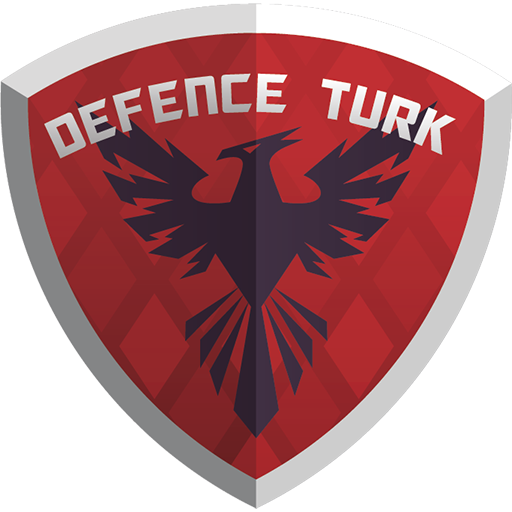dBSPL
SENIOR MEMBER

- Joined
- Mar 2, 2018
- Messages
- 7,661
- Reaction score
- 28
- Country
- Location
A scientific cooperation agreement was signed between TÜBİTAK UZAY and the Swedish Space Physics Institute for Turkiye's first Moon mission.

Significant progress has been made in Turkiye's first Moon Mission (AYAP-1). An agreement was signed between the Swedish Space Physics Institute (IRF) and TUBITAK UZAY on July 5, 2022 at the TUBITAK Space Technologies Research Institute for the scientific payload of the Lunar Neutral Telescope (LNT), which will collect data on neutral particles from the Moon's surface as part of Turkiye's first Moon mission.
Within the scope of this agreement, IRF will provide the LNT payload, and TÜBİTAK UZAY will integrate the LNT payload into the spacecraft it has developed for the Moon mission and make the data available to scientists of the two countries.
With this workload, it will be possible to conduct research on fundamental subjects such as celestial bodies such as the Moon, which atmosphere and magnetic field are not strong, and plasma interaction with their surfaces, the contribution of solar winds to the formation of water on the Moon, the formation of mini-magnetospheres and the physics of dust plasmas.
In addition, very productive meetings were held between these two institutions, which are experienced in the field of space technologies, and mutual information exchange was ensured. As a result of this cooperation, an agreement was reached between the two institutions, as well as between Turkiye and Sweden, on the expansion of scientific and technological cooperation.
The Lunar Neutrals Telescope (LNT) is being built at IRF's headquarters in Kiruna to study the Moon's surface and near-surface environment. LNT follows the successful predecessor on the Indian Lunar mission Chandrayaan-1 in the late 2000s. But this time, the new LNT will be able to achieve approximately seven times higher angular/spatial resolution, which will present a new perspective of the Moon.
Making statements on the subject, Dr. Manabu Shimoyama, IRF scientist and responsible for LNT, said, "We are particularly interested in permanently shadowed areas because they can keep volatile materials such as water untouched for billions of years."
Another mission of the LNT will be to study the supposed mini-magnetospheres that form around the Moon's magnetic fields (called magnetic anomalies) and understand how they interact with the solar wind and protect the Moon's surface from the solar wind as a cold. For about three months, the space probe will be in a circular orbit at an altitude of 100 kilometers from the lunar surface. The lunar mission AYAP-1 is scheduled to end with a controlled hard landing on the lunar surface.

 www.defenceturk.net
www.defenceturk.net

Significant progress has been made in Turkiye's first Moon Mission (AYAP-1). An agreement was signed between the Swedish Space Physics Institute (IRF) and TUBITAK UZAY on July 5, 2022 at the TUBITAK Space Technologies Research Institute for the scientific payload of the Lunar Neutral Telescope (LNT), which will collect data on neutral particles from the Moon's surface as part of Turkiye's first Moon mission.
Within the scope of this agreement, IRF will provide the LNT payload, and TÜBİTAK UZAY will integrate the LNT payload into the spacecraft it has developed for the Moon mission and make the data available to scientists of the two countries.
With this workload, it will be possible to conduct research on fundamental subjects such as celestial bodies such as the Moon, which atmosphere and magnetic field are not strong, and plasma interaction with their surfaces, the contribution of solar winds to the formation of water on the Moon, the formation of mini-magnetospheres and the physics of dust plasmas.
In addition, very productive meetings were held between these two institutions, which are experienced in the field of space technologies, and mutual information exchange was ensured. As a result of this cooperation, an agreement was reached between the two institutions, as well as between Turkiye and Sweden, on the expansion of scientific and technological cooperation.
The Lunar Neutrals Telescope (LNT) is being built at IRF's headquarters in Kiruna to study the Moon's surface and near-surface environment. LNT follows the successful predecessor on the Indian Lunar mission Chandrayaan-1 in the late 2000s. But this time, the new LNT will be able to achieve approximately seven times higher angular/spatial resolution, which will present a new perspective of the Moon.
Making statements on the subject, Dr. Manabu Shimoyama, IRF scientist and responsible for LNT, said, "We are particularly interested in permanently shadowed areas because they can keep volatile materials such as water untouched for billions of years."
Another mission of the LNT will be to study the supposed mini-magnetospheres that form around the Moon's magnetic fields (called magnetic anomalies) and understand how they interact with the solar wind and protect the Moon's surface from the solar wind as a cold. For about three months, the space probe will be in a circular orbit at an altitude of 100 kilometers from the lunar surface. The lunar mission AYAP-1 is scheduled to end with a controlled hard landing on the lunar surface.

İsveç'in faydalı yükünü Türk aracı Ay'a taşıyacak
Türkiye’nin ilk Ay görevi için TÜBİTAK UZAY ile İsveç Uzay Fiziği Enstitüsü (IRF) arasında bilimsel işbirliği anlaşması imzalandı.
 www.defenceturk.net
www.defenceturk.net

